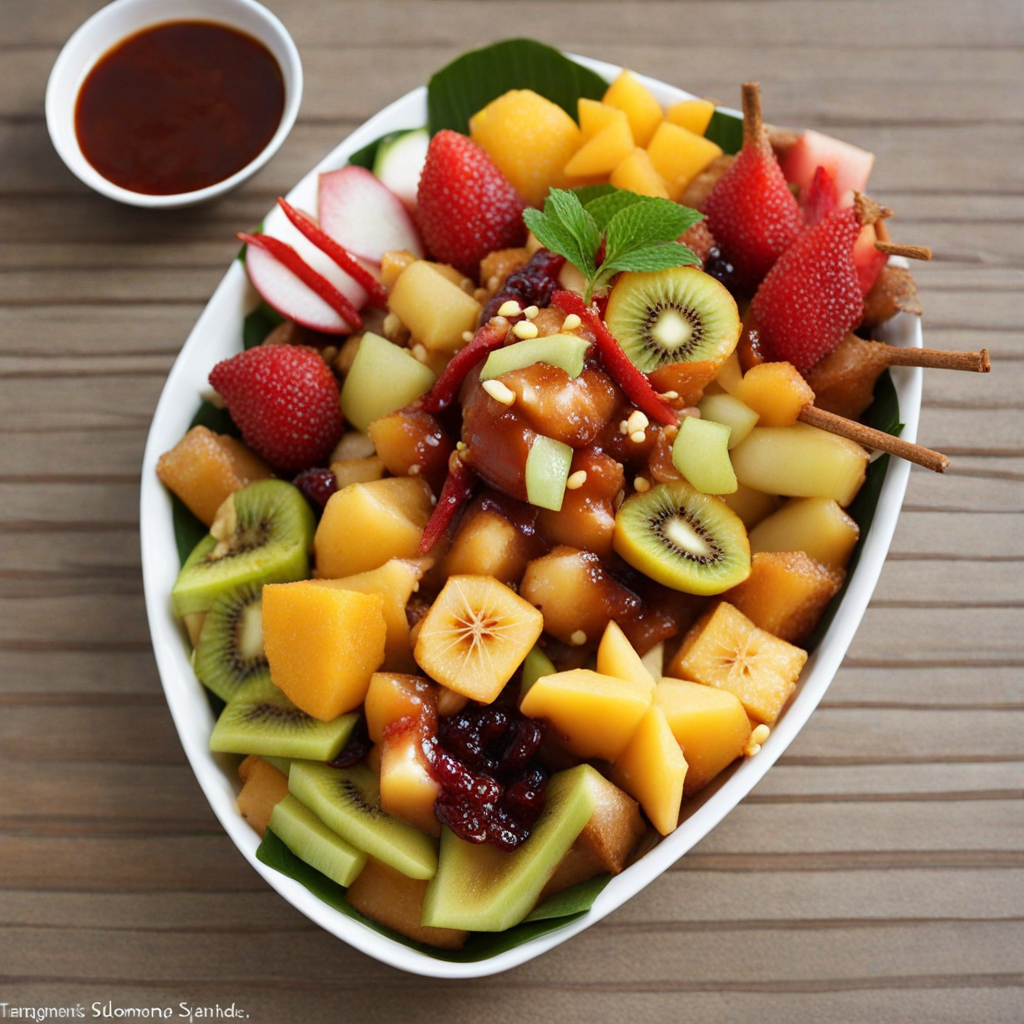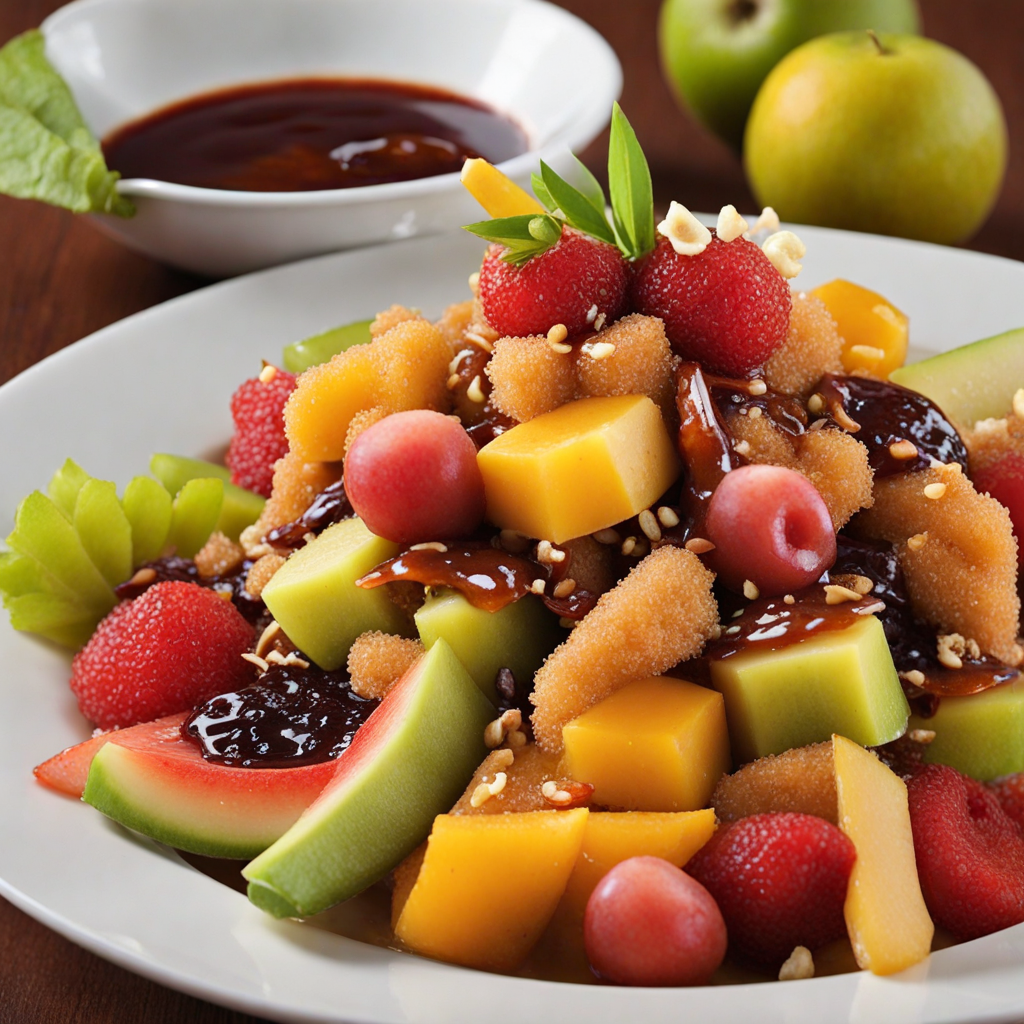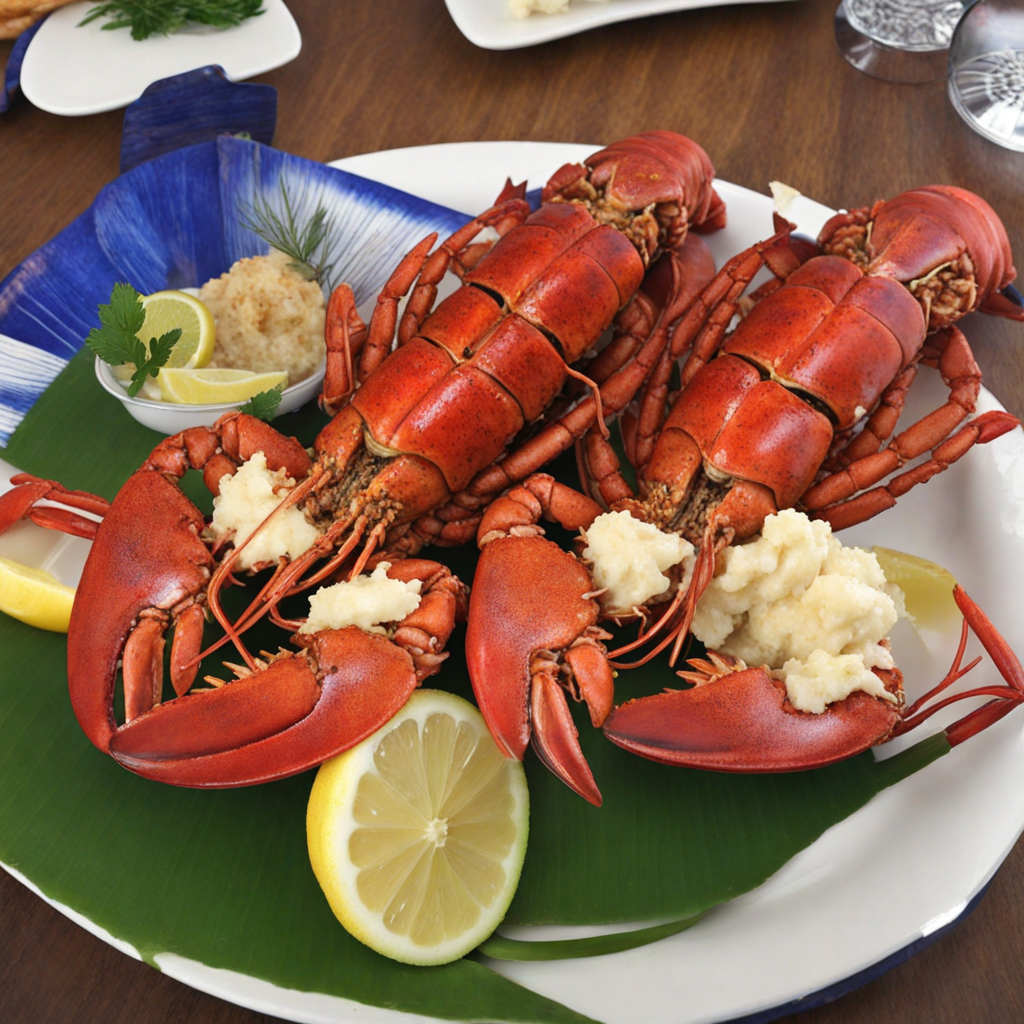Fruit Rojak
Fruit Rojak is a vibrant and tantalizing dish hailing from the Solomon Islands, where the tropical climate gifts an abundance of fresh fruits. This dish is a delightful mix of various fruits, including juicy mangoes, sweet pineapples, crisp cucumbers, and sometimes even the unique local fruit known as 'breadfruit'. The fruits are typically diced into bite-sized pieces, allowing for a medley of textures and flavors that dance on the palate. The combination of sweet, tangy, and refreshing elements makes each bite an exciting experience, perfect for those looking to explore new taste sensations. The highlight of Fruit Rojak lies in its zesty dressing, which is a harmonious fusion of local ingredients. A base of tangy tamarind paste is often used, mixed with a touch of chili for heat and a sprinkle of salt to enhance the flavors. Some variations may include a hint of sugar or honey to balance the tartness, creating a dressing that invigorates the fruits and elevates the dish to new heights. This dressing not only complements the natural sweetness of the fruits but also adds an intriguing depth that invites curiosity and appreciation for the local culinary culture. Served as a refreshing snack or a vibrant side dish, Fruit Rojak is a staple at local gatherings and celebrations. Its colorful presentation, often garnished with crushed nuts or seeds for added crunch, makes it visually appealing and appetizing. As you savor each spoonful, the medley of flavors and textures transports you to the lush landscapes of the Solomon Islands, making Fruit Rojak not just a dish to taste, but a delightful journey to experience.
How It Became This Dish
The Engaging History of Fruit Rojak from the Solomon Islands #### Origins and Cultural Significance Fruit Rojak, a delightful and vibrant dish, is a beloved fruit salad originating from the Solomon Islands, a nation known for its rich biodiversity and unique cultural tapestry. The term "rojak" is derived from the Malay language, meaning "mixture," and it perfectly encapsulates the spirit of this dish. While the name may suggest a broader Southeast Asian influence, the roots of Fruit Rojak are deeply embedded in the traditions and agricultural practices of the Solomon Islands. Historically, the Solomon Islands have been home to various indigenous communities, each with its own unique customs and traditions. The islands' tropical climate, coupled with fertile volcanic soil, has enabled the growth of a wide variety of fruits. These fruits, such as papayas, mangoes, bananas, and pineapples, form the cornerstone of the local diet and are often featured in communal feasts and celebrations. In the Solomon Islands, food is more than sustenance; it is a vital component of social and cultural identity. Traditional feasts, known as "mala," often include an array of dishes that showcase the community's agricultural bounty. Fruit Rojak serves as a symbol of hospitality and togetherness; it is commonly prepared for gatherings, festivals, and family occasions. Its vibrant colors and flavors reflect the islands' lush landscapes and the harmony of diverse cultural influences. #### Ingredients and Preparation The preparation of Fruit Rojak is an art form in itself. The dish typically features a mélange of fresh tropical fruits, often including bananas, mangoes, pineapples, and watermelon, all cut into bite-sized pieces. The fruit is then tossed together with a tangy dressing made from lime juice, chili, and sometimes shrimp paste, resulting in a balance of sweetness, tartness, and spiciness. The use of local ingredients is crucial to the dish’s authenticity. The Solomon Islands are home to a plethora of fruits, many of which are indigenous and have been cultivated for centuries. For example, the wild guava and breadfruit are often incorporated into modern renditions of Fruit Rojak, showcasing not just the bounty of the land but also the deep-rooted agricultural practices of the islands' inhabitants. #### Development Over Time The history of Fruit Rojak is not static; it has evolved over time, absorbing influences from various cultures that have come into contact with the Solomon Islands through trade, colonization, and migration. The arrival of European explorers and traders in the 16th and 17th centuries introduced new fruits and culinary techniques, which gradually integrated into local food practices. The introduction of citrus fruits like limes and oranges, for instance, transformed the flavor profile of traditional fruit salads. Similarly, as the islands became more interconnected with the outside world, the inclusion of ingredients such as chili and shrimp paste became commonplace, reflecting the culinary cross-pollination occurring at the time. Post-colonialism, the Solomon Islands experienced a resurgence in cultural pride, leading to a revival of traditional dishes, including Fruit Rojak. This revival was fueled by a desire to celebrate indigenous practices and reclaim culinary heritage. Community members began to recognize the importance of using local ingredients, which not only supported the economy but also reinforced cultural identity. In modern times, Fruit Rojak has found its place in both traditional and contemporary culinary settings. While it remains a staple dish at local gatherings and celebrations, innovative chefs have begun to experiment with its presentation and ingredients, creating new interpretations that appeal to both locals and tourists. The dish is often served in upscale restaurants, showcasing its versatility and universal appeal. #### Cultural Significance Today Today, Fruit Rojak represents more than just a dish; it symbolizes the rich cultural heritage of the Solomon Islands and the resilience of its people. It serves as a reminder of the islands' agricultural roots and the importance of community and sharing. In a world that is increasingly homogenized, the celebration of traditional dishes like Fruit Rojak is essential for preserving cultural diversity and culinary heritage. The preparation and consumption of Fruit Rojak are often accompanied by stories and rituals that further enhance its cultural significance. For instance, during family gatherings, elders may share tales of their ancestors and the history of the fruits being used, thereby passing down knowledge and traditions to the younger generation. This intergenerational exchange fosters a sense of belonging and continuity, linking the present with the past. Additionally, as the Solomon Islands navigate the challenges of globalization and climate change, the importance of local food systems has come to the forefront. Movements advocating for sustainable agricultural practices have encouraged communities to embrace and promote traditional dishes like Fruit Rojak, which not only celebrate local biodiversity but also highlight the importance of food sovereignty. #### Conclusion In summary, Fruit Rojak is more than a mere fruit salad; it is a culinary embodiment of the Solomon Islands' rich cultural heritage and agricultural practices. Its origins, steeped in tradition, have evolved through centuries of cultural exchange and adaptation, making it a symbol of resilience and community. As the Solomon Islands continue to celebrate their unique identity in the face of modern challenges, Fruit Rojak stands as a delicious testament to the islands' vibrant history and the enduring spirit of its people. Whether enjoyed at a festive gathering or served in a contemporary restaurant, Fruit Rojak remains a cherished dish that invites everyone to partake in its rich flavors and cultural significance.
You may like
Discover local flavors from Solomon Islands







